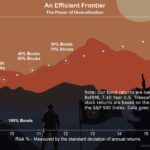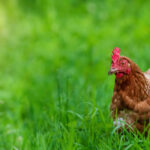
William (Bill) H. Gates, founder, technology advisor of Microsoft Corporation visits The Department of Energy on October 8, 2013. (PHOTO CREDIT: DOE PHOTOGRAPHER, KEN SHIPP)
Bill Gates, and his allies at the World Economic Forum and those embedded in America’s bureaucratic institutions like the FDA and EPA, are working very hard to take beef off the American dinner table. Instead, they want you to eat “lab-grown synthetic beef.” Other great ideas they have for you are living in a tiny house and not owning a car. Does that sound anything like the American dream to you? On his blog, Mercola.com, Dr. Joseph Mercola discusses the effort by Gates and the Great Reset crowd to control every part of your life, starting with your food. He writes:
Evidence that The Great Reset is rapidly approaching can be seen in the recent decision by the U.S. Food and Drug Administration to ban real meat, and if history is any indication, the same decision may be taken by other countries as well. The U.S. ban is slated to take effect April 1, 2024.
The decision comes on the heels of repeated public appeals to the Western world by Bill Gates to stop eating real meat and transition to lab-grown synthetic “beef” instead.
Gates Spearheads Fake Beef Climate Solution
As explained in the Navdanya International report, “Bill Gates & His Fake Solutions to Climate Change,” an excerpt of which was published by The Defender in April 2021:1“One of Bill Gates’ most recent promotions is his prescriptions of synthetic foods for developed countries as a means to combat climate change. In a recent interview with MIT Technology Review, Gates says he thinks ‘all rich countries should move to 100% synthetic beef.’
Fake food replaces animal products with highly processed food grown in labs, like fake meat, fake dairy products or fake eggs. It is made possible by technical innovations such as synthetic biology, which involves reconfiguring the DNA of an organism to create something entirely new.
For instance, plant-based meat companies like Beyond Meat and Impossible Foods use a DNA coding sequence from soybeans or peas to create a product that looks and tastes like real meat. Some companies are also investing in cell-based meat, grown from real animal cells, but it has yet to reach the market.
More and more firms are getting involved in this fast-growing market, like Motif Foodworks (plant-based meat and dairy alternatives), Ginkgo Bioworks (custom-built microbes), BioMilq (lab-grown breast milk), Nature’s Fynd (fungi-grown meat and dairy alternatives), Eat Just (egg substitutes made from plant proteins), Perfect Day Food (lab-grown dairy products) or NotCo (plant-based animal products made through AI), to name but a few.”
Beef Production Pegged as ‘Prime Culprit’ of Climate Change
According to Gates and other synthetic beef proponents — and now the FDA — natural beef production is a primary culprit of climate change.
A number of institutions have evaluated the environmental impact of cows and other livestock over the years, including University of California, Davis, where researchers like Frank Mitloehner have been busy measuring the amount of methane emitted by the average cow.2 According to UC Davis:3
“Cattle are the No. 1 agricultural source of greenhouse gases worldwide. Each year, a single cow will belch about 220 pounds of methane. Methane from cattle is shorter lived than carbon dioxide but 28 times more potent in warming the atmosphere, said Mitloehner, a professor and air quality specialist in the Department of Animal Science.”
Meat Is Also Implicated in Foodborne Disease
Livestock raised in massive industrial farming arrangements, aptly called “confined animal feeding operations” (CAFOs), have also been identified as a source of foodborne illness. Covered in feces and urine, dehydrated and often sickly, these animals are slaughtered using mechanized tools and procedures that convey these infection-loaded excreta into the final meat product.
The food and food-contaminant combination that causes the most harm to human health is campylobacter, which sickens more than 1.5 million people4 and costs the U.S. an estimated $1.3 billion a year. In second place is toxoplasma, costing society another $8 billion5 annually.
Despite the obvious reality of foodborne illness, very little was actually known about which foods were the riskiest until a report6 from the University of Florida’s Emerging Pathogens Institute revealed the pathogen-food combinations most likely to make you sick. The report, issued in 2011, showed that the data overwhelmingly pointed to tainted meats as the prime culprits.
Realizing that pasteurization of animal products such as milk falls way short of protecting human health, the U.S. Department of Agriculture in 2014 proposed tackling the No. 1 source of costly foodborne illness — raw meat — by placing restrictions on the sale of raw meat.
The proposal didn’t go anywhere, but the FDA is now pointing to it as yet another reason to ban natural meat sales altogether. Lab-grown synthetic “beef” does not have any of these issues, they claim, due to the fact that all of the ingredients in each batch can be carefully controlled.
Beef Consumption Is ‘Unsustainable’
As reported by UC Davis:7
“With the escalating effects of climate change, that fact has advocates urging the public to eat less beef. They contend it’s an unsustainable diet in a world with a population expected to reach nearly 10 billion by 2050.”
As mentioned, Gates is one such anti-beef advocate. In mid-February 2021, he gave an interview with MIT Technology Review, in which he suggested that that synthetic beef, such as Impossible Foods (which he cofounded with Google and Jeff Bezos), “is a key part of climate action,” as it would eliminate a key source of global greenhouse gas emissions.8
Gates has also suggested that synthetic beef could eliminate the “protein problem,” i.e., the fact that we’re facing a global shortage of protein-rich foods in the wake of the COVID pandemic.9
The strong recommendation to replace beef with fake meat is made in Gates’ book “How to Avoid a Climate Disaster: The Solutions We Have and the Breakthroughs We Need,” which was released in February 2021. As for the issue of taste, Gates assured MIT Technology Review10 that:
“You can get used to the taste difference, and … they’re going to make it taste even better over time.”
The irony of Bill Gates — who lives in a 66,000-square-foot mansion and travels in a private jet that uses up 486 gallons of fuel every hour11 — talking about how to save the environment isn’t lost on everyone. Two days after his MIT Technology Review interview, The Nation criticized Gates’ contradictions, including the fact that his jet-setting lifestyle also makes him a carbon “super emitter”:12
“According to a 2019 academic study13 looking at extreme carbon emissions from the jet-setting elite, Bill Gates’s extensive travel by private jet likely makes him one of the world’s top carbon contributors — a veritable super emitter. In the list of 10 celebrities investigated — including Jennifer Lopez, Paris Hilton, and Oprah Winfrey — Gates was the source of the most emissions.”
Read more here.
If you’re willing to fight for Main Street America, click here to sign up for my free weekly email.





